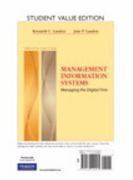What is expected: Write a formal report, with headings, using your reading, research, learning and journal content as a starting point. We suggest writing the report in two parts Part 1 (approx. 1,500 words) - written based on your research findings so in 3 " person Your report should present a project plan to implement a smooth transition of staff going back to the offices and a consultancy report on how to make the work environment a safe place to work in the assigned Case Study (Bedford Town Residences). It should demonstrate an understanding of business functions as well as an understanding of the key elements of the Project Life-Cycle and in particular the Business Case in the Define phase (of the 4 D's model). Your Business Case must also show application of the Weighed Score-Card tool as well an appreciation of the importance and role of stakeholders to the project. There should be clear evidence of reading about the topic beyond the areas discussed in class and include both academic sources to support your use of key models and concepts as well as credible non-academic sources to support your discussion and evaluation of potential projects to address the issues facing the Case Study company (Bedford Town Residences). You must reference your sources both in-text and in a Reference List using the Harvard-UoB style (please see referencing resources on the LRWeb for further guidance if needed). Your Report should include the following elements: Executive summary: Describe the key points from the report, including the most important findings and recommendations. Introduction: Explain the purpose of your report and lay out the structure of the rest of your report. Reasons: Describe the reasons for doing the project e.g. the business problem which you are trying to solve for the Case Study company (Bedford Town Residences). Provide sufficient background and contextual information on the Case Study company to allow the reader to understand the rest of your report. Business options: Describe the different options which have been considered and recommend an option. One option must always be the 'Do nothing' option. This option does not result in a project. Other options might be 'Do the minimum we can', 'Do something else' etc. You should try to provide enough information that the approvers of the business case will be able to judge which option gives the best value for money. You must use the Weighed Score-Card Model to present the business options. Expected benefits: Describe the benefits of the recommended option, in measurable terms if possible. They can be both qualitative and quantitative and supported by credible citations Expected dis-benefits: Describe any dis-benefits. These are actual consequences of a successful project which are negative. If possible, quantify the dis-benefits and support with credible citations. Timescale: Describe 2 timescales: the project timescale and the timescale over which the benefits will be realised. Costs: Describe 2 costs: the project costs, and the ongoing operations and maintenance costs which will be incurred over the benefits realisation timescale







